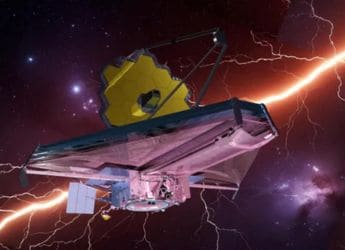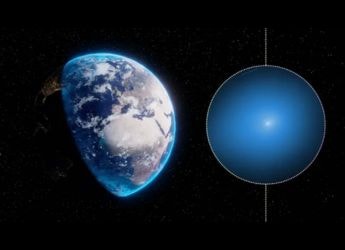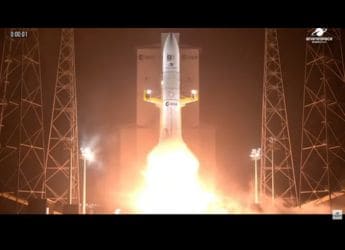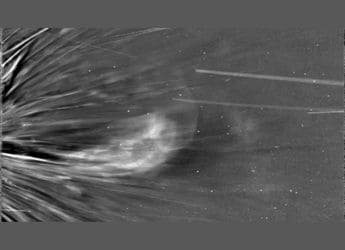- Home
- Science
- Science News
- Clouds Around Exoplanets Could Be Hiding Atmospheric Water: Study
Clouds Around Exoplanets Could Be Hiding Atmospheric Water: Study
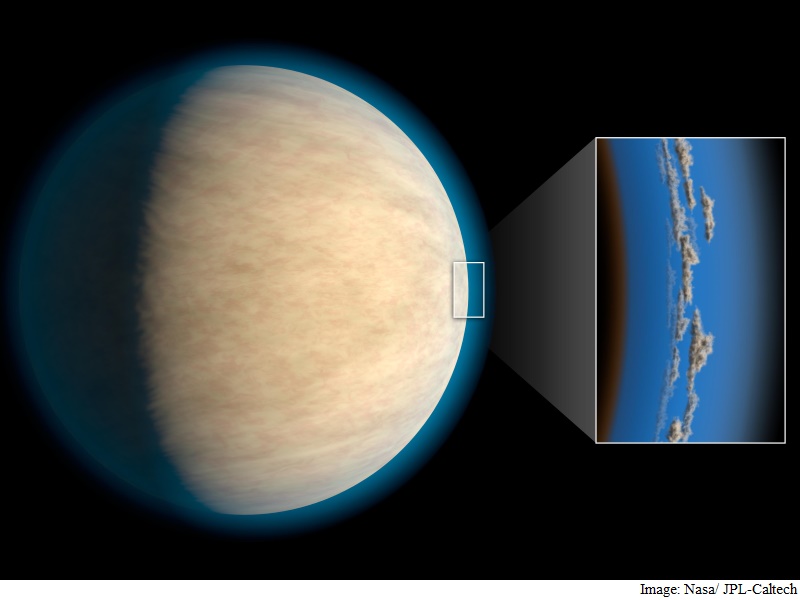
Astronomers have found many hot Jupiters - whose mass are similar to that of Jupiter but are much closer to their parent star than Jupiter is to the Sun - with water in their atmosphere, but others appear to have none.
"The motivation of our study was to see what these planets would be like if they were grouped together, and to see whether they share any atmospheric properties," said lead author Aishwarya Iyer from Nasa's Jet Propulsion Laboratory-Pasadena, California.
"Clouds or haze seem to be on almost every planet we studied," Iyer said. "You have to be careful to take clouds or haze into account, or else you could underestimate the amount of water in an exoplanet's atmosphere by a factor of two," he added.
The clouds themselves are likely not made of water, as the planets taken into account can reach a scorching 1,100 degrees Celsius, meaning any water they host would take the form of water vapour.
In the study, published recently in the Astrophysical Journal, scientists looked at a set of 19 hot Jupiters previously observed by Hubble. The telescope's Wide Field Camera 3 had detected water vapor in the atmospheres of 10 of these planets, and no water on the other nine.
But that information was spread across more than a dozen studies. The methods of analysing and interpretation varied because the studies were conducted separately. There had not been one overarching analysis of all these planets.
Iyer's team combined the datasets for all 19 hot Jupiters to create an average overall light spectrum for the group of planets. They then compared these data to models of clear, cloud-free atmospheres and those with various cloud thicknesses.
The scientists determined that, for almost every planet they studied, haze or clouds were blocking half of the atmosphere, on average.
"In some of these planets, you can see water peeking its head up above the clouds or haze, and there could still be more water below," Iyer said.
Scientists do not yet know the nature of these clouds or hazes, including what they are they made of.
Get your daily dose of tech news, reviews, and insights, in under 80 characters on Gadgets 360 Turbo. Connect with fellow tech lovers on our Forum. Follow us on X, Facebook, WhatsApp, Threads and Google News for instant updates. Catch all the action on our YouTube channel.
Related Stories
- Samsung Galaxy Unpacked 2025
- ChatGPT
- Redmi Note 14 Pro+
- iPhone 16
- Apple Vision Pro
- Oneplus 12
- OnePlus Nord CE 3 Lite 5G
- iPhone 13
- Xiaomi 14 Pro
- Oppo Find N3
- Tecno Spark Go (2023)
- Realme V30
- Best Phones Under 25000
- Samsung Galaxy S24 Series
- Cryptocurrency
- iQoo 12
- Samsung Galaxy S24 Ultra
- Giottus
- Samsung Galaxy Z Flip 5
- Apple 'Scary Fast'
- Housefull 5
- GoPro Hero 12 Black Review
- Invincible Season 2
- JioGlass
- HD Ready TV
- Laptop Under 50000
- Smartwatch Under 10000
- Latest Mobile Phones
- Compare Phones
- OnePlus 15R
- Realme Narzo 90x 5G
- Realme Narzo 90 5G
- Vivo S50 Pro Mini
- Vivo S50
- OPPO Reno 15c
- Redmi Note 15 5G
- Redmi Note 15 Pro 5G
- Asus ProArt P16
- MacBook Pro 14-inch (M5, 2025)
- OnePlus Pad Go 2
- Poco Pad M1
- Just Corseca Skywatch Pro
- Honor Watch X5
- Acerpure Nitro Z Series 100-inch QLED TV
- Samsung 43 Inch LED Ultra HD (4K) Smart TV (UA43UE81AFULXL)
- Asus ROG Ally
- Nintendo Switch Lite
- Haier 1.6 Ton 5 Star Inverter Split AC (HSU19G-MZAID5BN-INV)
- Haier 1.6 Ton 5 Star Inverter Split AC (HSU19G-MZAIM5BN-INV)














